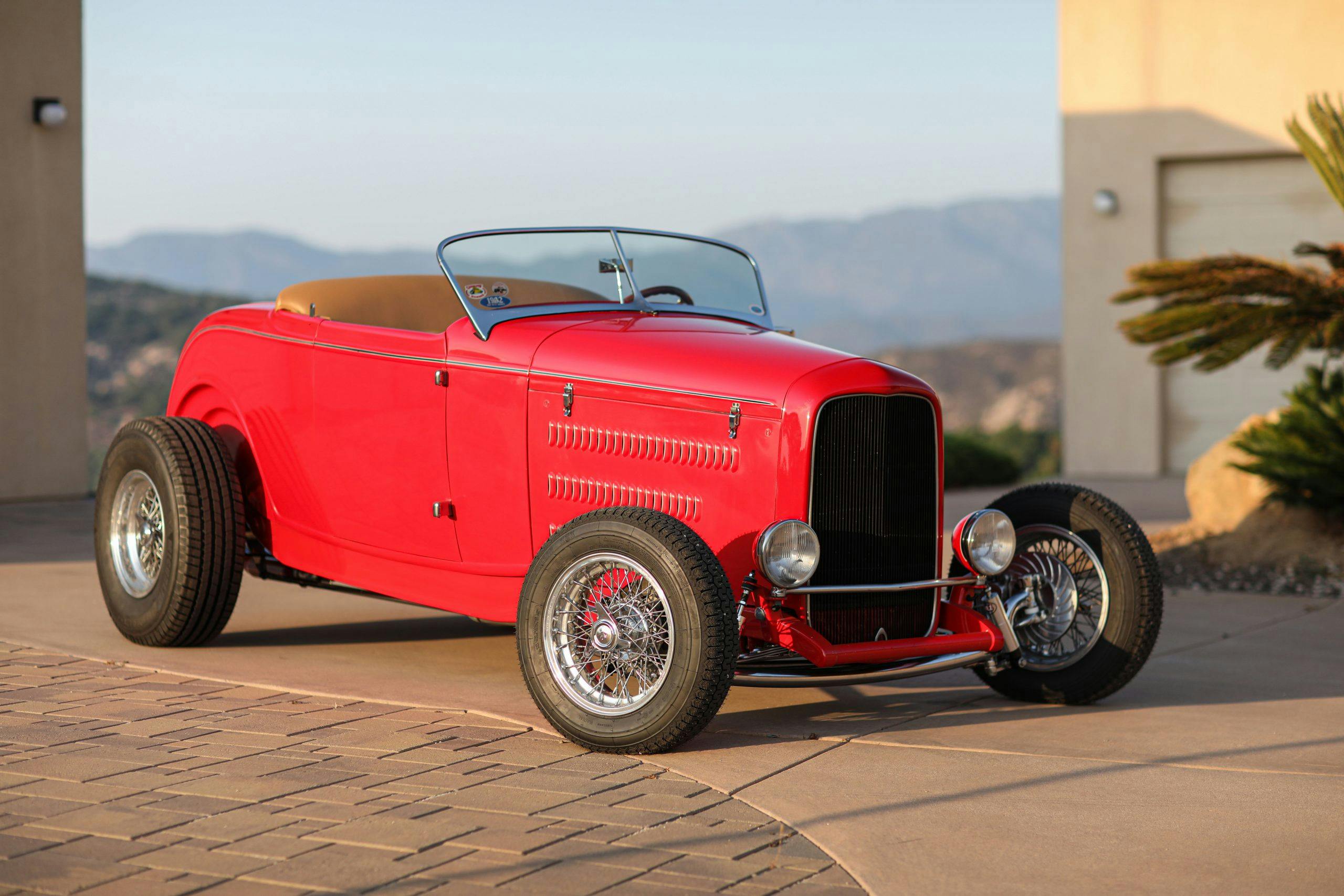Media | Articles
Maranello Mashup: The Ferrari-powered Deuce that became ’70s hot rod royalty
There’s a certain stigma that often comes with show-winning hot rods. Contrarians will use the term “trailer queen” to dismiss builds that they assume are too nicely finished to actually rack up miles. The Deucari, a Ferrari-powered 1932 Ford roadster and winner of 1979’s America’s Most Beautiful Roadster, may look like a pampered show car, but it has the odometer—and paint chips—to prove otherwise.

The striking red hot rod was built in 1979 by Dick “Magoo” Megugorac for Brian Burnett, who ran Los Gatos Ferrari. Burnett wanted the beautiful American lines of a Deuce roadster and the sports car growl of a Ferrari V-12, so Magoo’s Street Rods spent six months building a fantastic custom creation that married the two disparate automotive worlds into one striking machine. Hence the nickname “Deucari”.
Ferrari V-12s aren’t easy to come by, and even as a Ferrari dealer, Burnett didn’t have one laying around. However, it turned out he knew someone that did. Bill Harrah put a 4.4-liter Ferrari V-12 into a Jeep Wagoneer and when the “Jerrari” got yet another engine swap, the beautiful Italian mill needed a new home. It was off to Magoo’s.
Despite the long engine, the lines of the ’32 roadster are hardly disturbed. Starting with a fiberglass body from Wescott’s Auto Restyling, Magoo recessed the firewall a bit to fit the Ferrari’s twin distributors. A new hood and hood sides were fabricated, stretched about three inches over the factory dimensions, and they meet a slightly sectioned ’32 grille shell. The result is subtle and easily missed by all but the most astute of hot rod fanatics. Soon after it was finished it captured the prestigious title of “America’s Most Beautiful Roadster” at the Grand National Roadster Show in 1979.

The car’s current owner, Rich Hubbard of Murietta, California, says that while the car looks like a typical hot rod, heads really turn when he fires it up. “You expect to hear a rumble, not a high-revving sports car motor,” Hubbard told us. Indeed, the sound does seem a bit out of place, but the engine note is fantastic.
Marketplace
Buy and sell classics with confidence
The car rides on original ’32 Ford frame rails that have been stretched about four inches. The front suspension uses a Super Bell dropped axle and disc brakes. Koni coilovers sit out back on a quick-change rear axle. The rear brakes have been upgraded recently, seeing as the car’s driveshaft-mounted parking brake was never that effective. When his family acquired the car, it came with a wood wheel chock that Magoo had labelled “parking brake”.
We happened upon the Deucari by accident. Hubbard was getting it tuned up by Jay Dean at Nostalgia Ranch. If you thought it was difficult to find someone to get a Quadrajet tuned properly, you can imagine what it’s like to find a gearhead that can get a vintage Ferrari V-12 running in Tipo-251-top shape. Hubbard told us the car had always had a bit of off-idle stumble, so Dean jetted the trio of carbs and Hubbard reports that the car is now running better than ever.
When the hot rod was originally built, Magoo used a GM Muncie four-speed manual, but Hubbard decided that a Doug Nash five-speed would be both fitting for the build and also add some drivability. When paired with the right gear set for the quick-change, it allowed the car to take full advantage of the high-revving V-12.
Despite a somewhat tight fit behind the wheel, Hubbard is quick to point out the car’s character. “It’s a fun car to drive, and it’s an easy car to drive,” Hubbard said, noting that the suspension, while primitive, still makes the car feel like a sports car. He drives it to several events each year and the SW odometer, located at the bottom of the speedometer and to the left of the tachometer and its 8000-rpm redline, indicates that the car has seen nearly 50,000 miles. Clearly not a trailer queen.




































wow what a nice car
I remember that car, it was featured in Street Rodder magazine when I was a teenager
I remember the day it came out.. Loved it then Love it now. Long may she run!